Rat cages: characteristics, selection, equipment, care
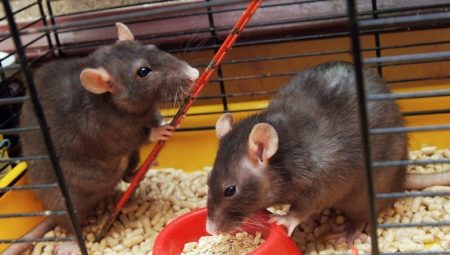
Before you buy any pet, you need to carefully choose a house for it, and rats are no exception. Since these animals will spend all their time in the cage (eating, playing, sleeping), it should be spacious and equipped with various accessories. Such structures can be purchased both ready-made and made independently, the most important thing is that they meet all safety standards and facilitate the care of the animals.
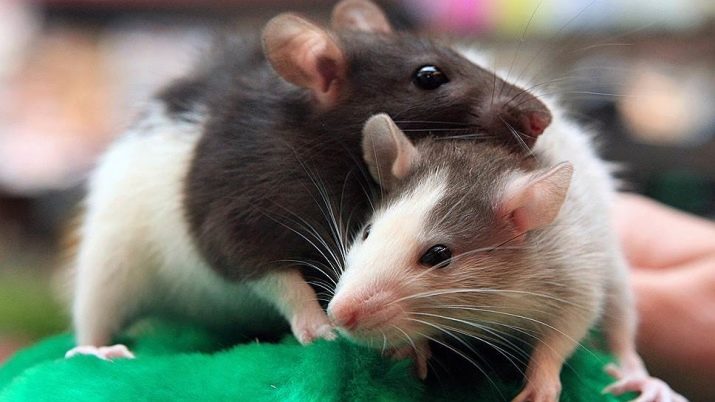
Design features
The rat cage is the pet's main housing, so it should be comfortable and allow it to move freely. As a rule, for the maintenance of a decorative rat, structures are purchased, consisting of several floors, each of which has a height of at least 20 cm.
You should not buy too tall houses, a 3-storey cell is considered the best option. It will be enough for the rodent to be able to arrange a place for sleeping and active entertainment. Since rats love to climb heights, it is desirable that hammocks are provided in the cage, which are protruding safety elements.
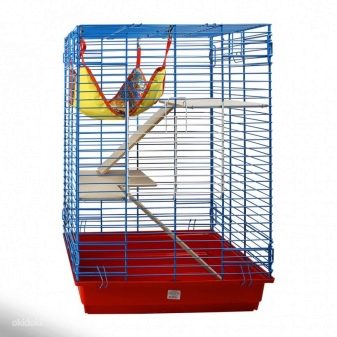
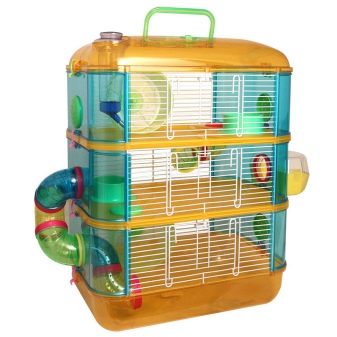
The distance between the rods is also important in the design of the cage; it is selected depending on the dimensions of the animal. The minimum indicator for babies is no more than 1 cm, for adults - 2.5 cm. In order for the rodent's house to be conveniently cleaned, it is recommended to choose a cage with a pull-out tray. Aquariums are poorly suited for keeping rats, they do not provide good ventilation and the animal will not live in such a dwelling for long.
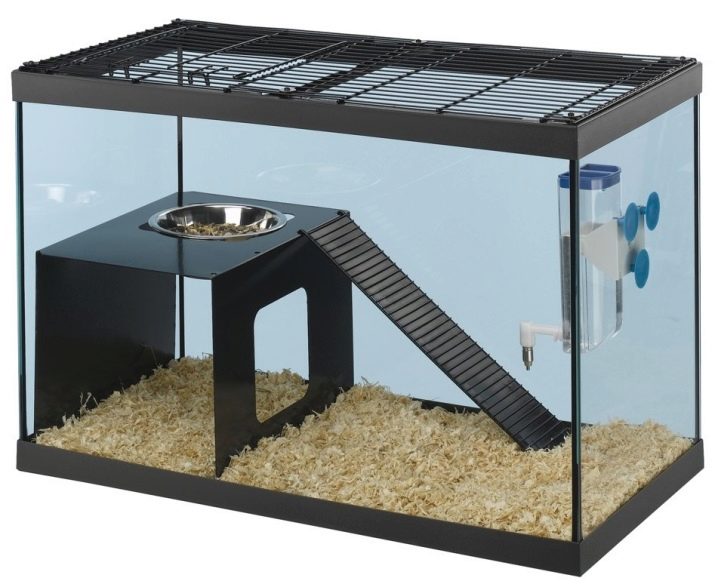
The presence of shelves is considered an important detail in rat cages. They come in wood, lattice and plastic.
We must also not forget that the cage should have a variety of accessories that provide the rats with comfortable conditions for living and playing.
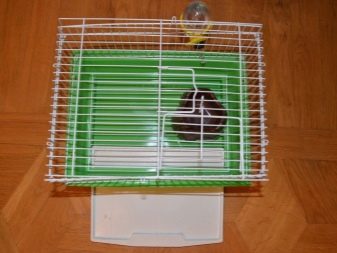
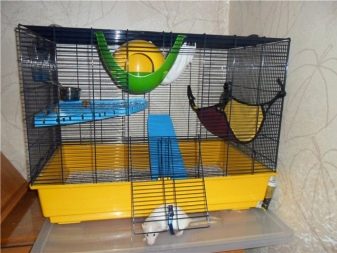
Dimensions (edit)
It is best to keep moving rodents in spacious houses. It should be borne in mind that at least 0.04 m3 of space should be allocated for each individual. If it is planned to place a couple of animals in the cage, then this figure is 0.06 m3.
For babies and adolescents, you can purchase two- or three-story structures, for adult animals a large cage measuring 60 by 40 cm is ideal.There are also houses on sale with dimensions of 430 * 280 * 540 mm, 385 * 275 * 435 mm, for keeping a couple of rodents they will be small, but for a single rat they will be ideal housing.

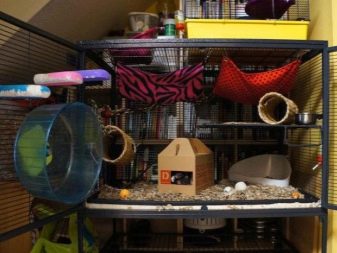
Cages with a minimum volume are allowed to be bought only if you plan to walk the animals out from time to time. For the permanent keeping of a pet in a cage, experts recommend purchasing structures that are twice as large as standard sizes.
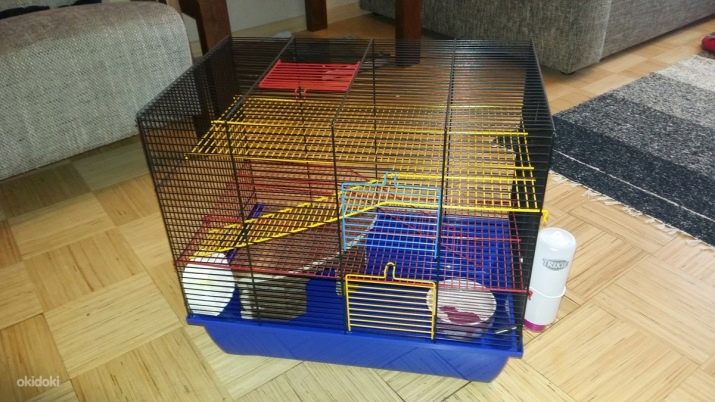
The form
For breeding decorative rats at home, square and rectangular designs are well suited, while they should not be too long and tall. Many pet owners purchase cages of unusual shapes (oval, triangular) to decorate the interior, but it will be inconvenient for rats to live in such structures.
It is best to give preference to rectangular models and fill their free space with hammocks, ladders.
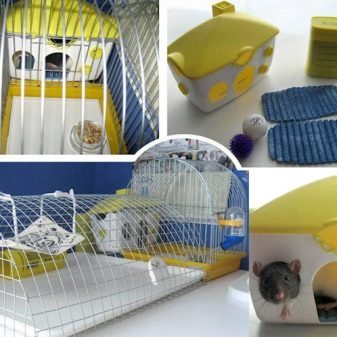
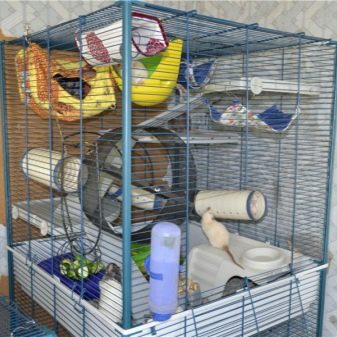
Materials (edit)
Today, rat cages are presented on the market in a chic assortment, and each of their models differs not only in size, design, but also in the material of manufacture. As a rule, the structures of such cages consist of rods and a plastic pallet. In that case, if an unpleasant smell of paint is noticed when choosing a product, then such a purchase must be abandoned. This indicates that the cell is made of poor quality material and is toxic.
Lattice instructions are usually presented with galvanized or painted rods. They do not pose a danger to the life of the animal, but experts recommend giving preference to cages with black rods. They are almost invisible and allow you to conveniently observe the pets.
It is advisable to refuse from bright and light shades of rods, since they will visually "cut" the rodent into squares and, when observing the animal, ripples will appear in the eyes.
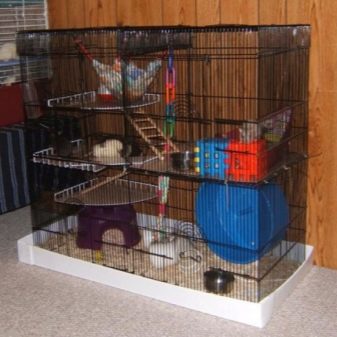

Now you can also find on sale and cells in which the rods are replaced with plastic. Such models are unsuitable for keeping rats, since it is difficult for pets to run on plastic.
As for the pallet, it should be made only of plastic, since the wooden one quickly absorbs moisture, odors and will not last long.
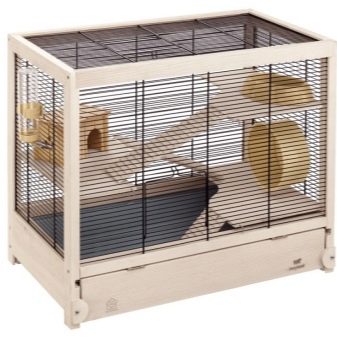
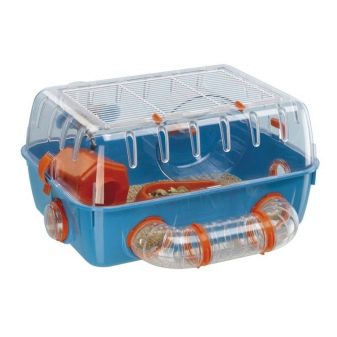
How to choose?
For many, the choice of a cage for domestic rats may seem difficult, especially if you need to purchase a comfortable house for two pets at the same time. In fact, this is not the case. The most important thing is to take into account the size of the pets and the design features. A simple cage with lattice walls is perfect for keeping a pair of rodents, in which animals can move freely and gain access to air.
It is also necessary to pay special attention to the dimensions of the structure. For boys, it is recommended to buy more spacious cages, and for keeping a female and a male, the minimum space is calculated separately for each individual.
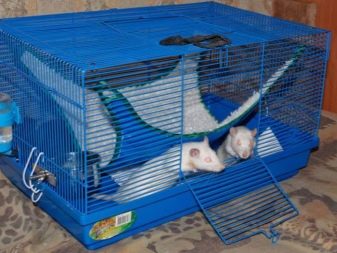
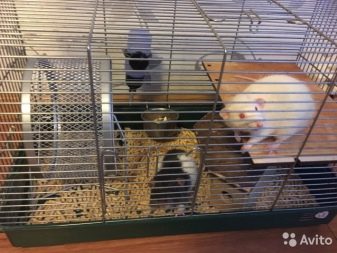
A common habitat for rats is a terrarium (aquarium). Such a house is easy to clean, the smell from animals does not spread throughout the room, the animal is reliably protected from drafts and the filler is not scattered on the floor.
But in such housing, the animal will not receive the required level of ventilation and the rat behind the glass will completely lose communication with the owner, and she is a very social animal.Therefore, these models can be used only temporarily and try to replace them with permanent cells with rods. The showcase is also ideal for keeping rodents.
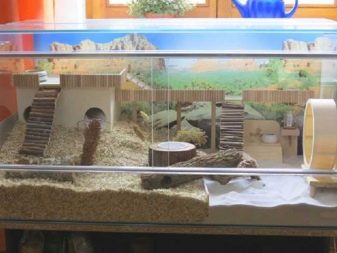
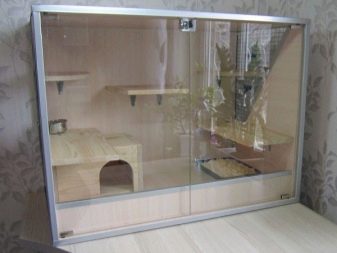
An important role when choosing a cage is played by the format of the structure (the ratio of width, height and length). Regardless of the sex of the animal, the cage should be chosen in standard shapes, it should not be too "flat" (have a small height and a large base), too narrow with a large length and height. It is also not allowed to use "tower" structures, they have a small base and a large height. This design is unstable and inconvenient for animals. Therefore, with a structure height of 80 cm, the size of its base should be at least 50 * 70 cm.
In addition, when going to buy a cage, you should take into account other parameters.
- Distance between rods... The maximum value of this indicator is no more than 1.7 cm. If a female and a male live in the house at the same time, then the distance can be increased to 2 cm. When the couple have babies, they can "seep" through the metal barrier. Therefore, it is important for them to foresee another cage in advance.
- Processing of metal rods. Recently, structures with galvanized and painted rods have been on sale. At the same time, the latter have a number of disadvantages - they quickly oxidize, absorb odors and look unaesthetic, since their surface becomes covered with white spots over time.
- The presence of a false door. The best models of cages are equipped with a special compartment that avoids problems with cleaning and spreading filler from the house. Moreover, this structural element can be traumatic for pets. To protect the paws of rodents from fracture, the middle part of the cages with a false bottom must be covered with PVC rugs, cardboard or linoleum.
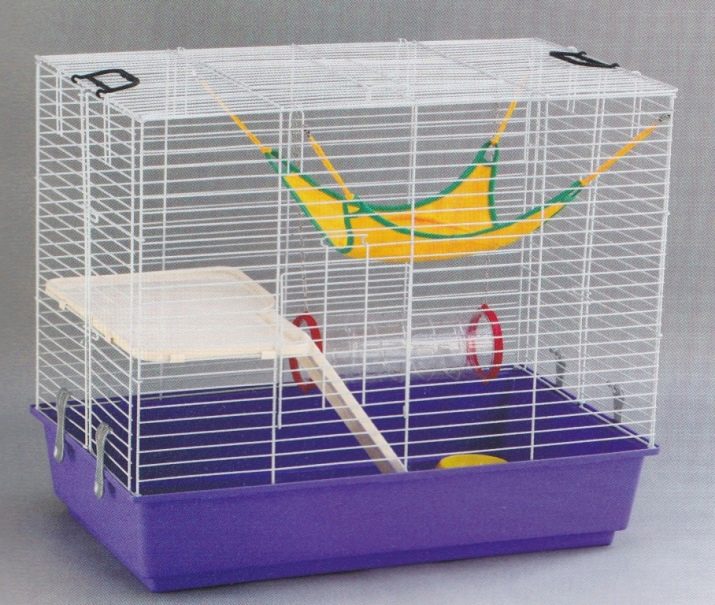
How to equip?
The health and behavior of rats kept at home largely depends on the conditions in which they are kept. Therefore, the arrangement of the cage is considered one of the important tasks before purchasing a rodent. First of all, you need to pay attention to the choice of filler. Litter is typically wood shavings, compressed corn filler and pieces of paper.
You cannot lay newspaper fragments on the bottom of the cage, as they contain printing ink.

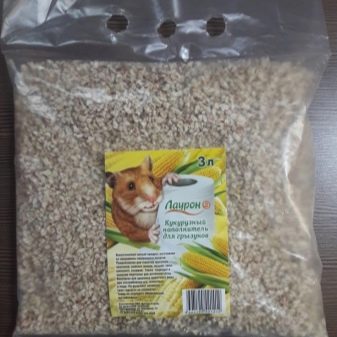
The list of important accessories that you need to equip the rat's housing will be supplemented by the following items.
- Drinking bowl. Ball drinkers with a metal tip are ideal for this species. They are easily attached to the walls of the structure (from the back side) and their spout is conveniently pushed through the mesh inside.
- Feeder. Rodents are very fond of dragging, chewing and turning their bowls, so it is advisable to pour food into hanging metal or ceramic products.
- Hammock. It will be used by rats as a sleeping place, so it should be made of soft material.
- House. It is a secluded place for animals, where they can rest and hide. Despite the fact that many rodents prefer not to sleep in a house, you still need to put it, this will give the animals a feeling of security.
- Toilet. For its arrangement, as a rule, ceramic or plastic containers are used, which would be conveniently placed in one of the corners of the pallet.
- Shelves. They are an obligatory component of any cage and are installed on different tiers. The distance between the shelves should not be less than 20 cm. To diversify the life of rats, experts recommend fixing several plastic or lattice shelves on each floor.
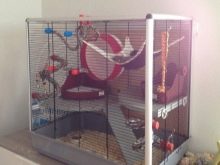
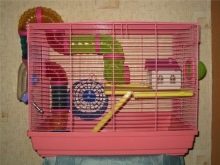
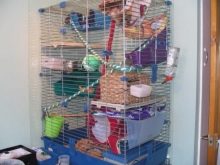
When equipping cages, consideration should also be given to the choice of toys. Since this type of rodent is considered the most mobile and loves to constantly jump and climb, housing for them should turn into a real "gym" and allow the animals to make up for the lack of movement. For an active lifestyle of pets, you should additionally purchase such accessories.
- Suspended ladder. This element will allow not only to go in for sports, but also make life easier for elderly individuals, acting as a means of transportation. The suspended ladder will insure small rats against falling from a height.
- Plastic and wooden pieces of pipes. They will serve as an original transition between zones.
- Swing. They can be both rope and wooden.
- Metal springs. They are hung up instead of a ladder on the floors.
- Cords. It is advisable to buy products woven from thick rope with a huge knot at the end.
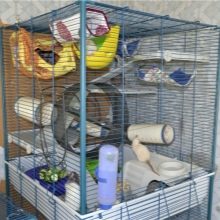
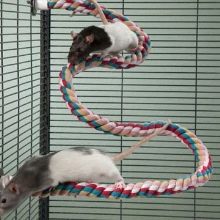
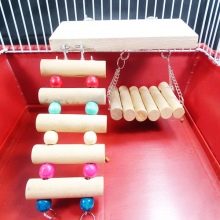
We must also not forget about toys made of wood, which are intended for gnawing. In their holes, you need to put your favorite treats of the animals, having previously wrapped them in paper. As for the running wheel, it is not necessary for rats, since it is inconvenient for animals to run on it because of the long tail. Walking balls are not suitable for rats, because rodents are very curious, they love to sniff and inspect everything.
To compensate for the lack of movement, you can walk the rats using special harnesses.
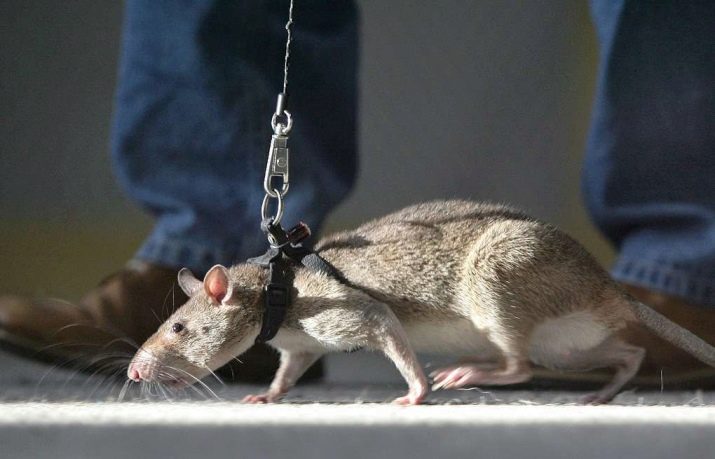
How to care?
The housing of rats must be kept in constant order and cleanliness, this will avoid frequent diseases of the animal and the appearance of an unpleasant odor in the room. Therefore, daily the cage needs to be washed with soap and the filler changed. In this case, you can remove only part of the sawdust that has been contaminated. Feeders and drinkers should also be wiped thoroughly and filled with fresh water.
At least once a week, you need to carry out a general cleaning in the house, which provides for a complete replacement of the filler and wiping all toys, exercise equipment and washing the pallet.
For wet cleaning, it is advisable not to use detergents with a pungent odor. It is also important to ensure that the detergent composition is completely washed off from the cell surface.
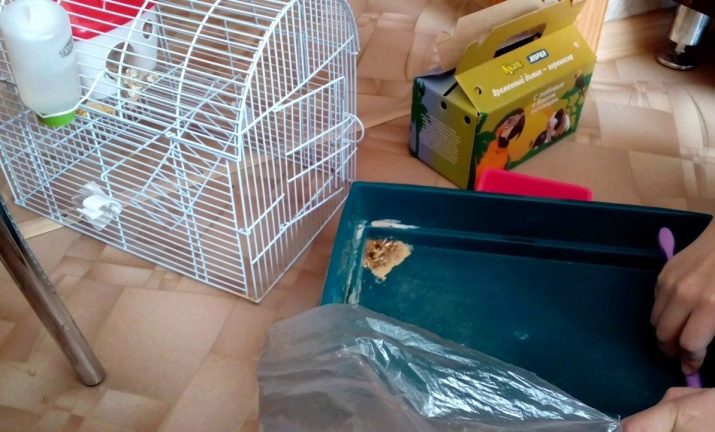
Interesting examples
Recently, you can find various cages for rats on sale, therefore, giving preference to one model or another, it is important to take into account not only personal preferences, but also how comfortable the animal will feel in the new house. In this case, the cage should harmoniously fit into the overall interior of the room. The following interesting cage options are very popular with pet owners.
- Aviary cage in black with a pull-out tray and vertical rods. It has a standard rectangular shape, and its construction consists of plastic and metal parts. Bright shelves made of colored plastic will give an original look to such a house.
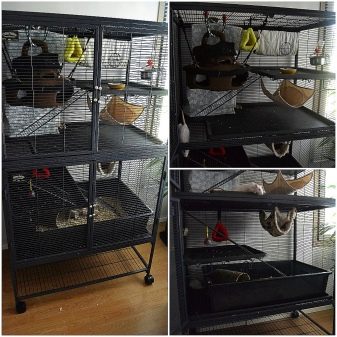
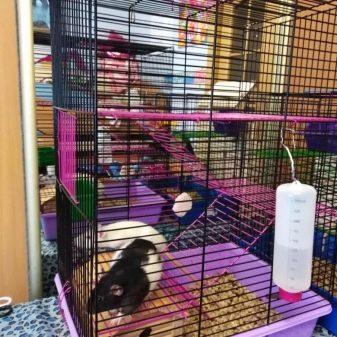
- Multi-tiered cage in the form of a castle. Such a fabulous design will fit well into any style of the room and will serve as a comfortable home for rodents. The structure can contain both 3 and 4 floors, each of which must be decorated with interesting and useful elements for the life of a rat. If desired, the outer sides of the "castle" can be decorated with LED strip, which will help create an unusual atmosphere in the room.
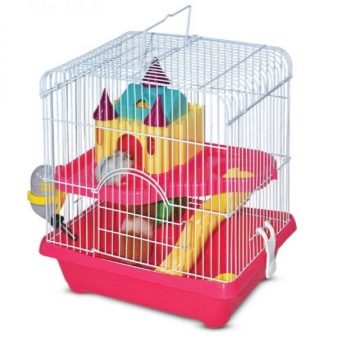
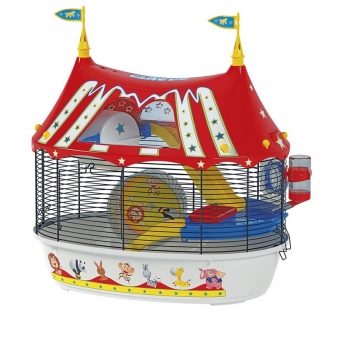
You will learn more about rat cages in the following video.








